CIRCE - CENTER FOR ISOTOPIC RESEARCH ON CULTURAL AND ENVIRONMENTAL HERITAGE
Partner Institutions
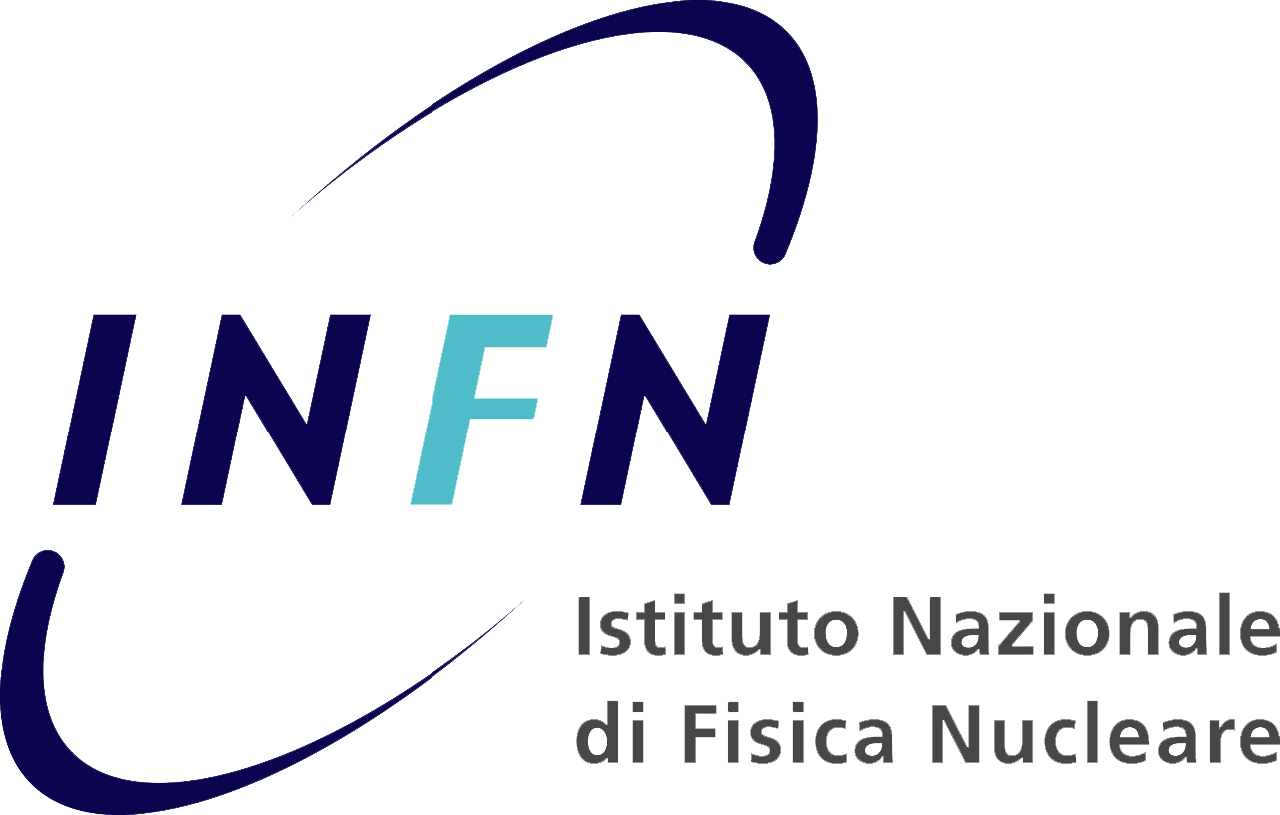

The Center for Isotopic Research on Cultural and Environmental heritage was established in 2005 with the aim of performing basic and applied research, as well as service activity, using isotopic methodologies applied to the diagnostics of cultural heritage artifacts and to the study of environmental processes. As such methodologies were originally developed in the domain of physics research, the fields of activity of CIRCE were extended, on one side, towards basic nuclear physics and nuclear astrophysics and, on the other side, towards industrial applications. Mass spectrometry of isotopes of the most abundant elements in nature is a powerful investigation tool, widely used in sciences applied to the cultural and environmental heritage diagnostics. The environment is, by its nature, in continuous evolution, but mankind has accelerated the path towards an unknown direction. The measurement of the isotopic composition of elements such as Carbon, Oxygen and Nitrogen in the atmosphere, in soils, in vegetation and in waters has been demonstrated to be a very sensitive indicator of the tiny variations of the fluxes of such elements and to study mechanisms still barely understood.
The presence in the environment of long lived cosmogenic isotopes allows to significantly extend the investigation possibilities, provided the isotopic ratio measurement sensitivity is pushed to extremely high levels, not accessible to conventional mass spectrometry. Accelerator Mass Spectrometry (AMS) is a sophisticated method which allows ultrasensitive measurements, the most widely known being radiocarbon dating. Dating of finds with age old up to 50 ky can be performed if they contain organic Carbon. In this case the 14C/12C isotopic ratio, constant and equal to the atmospheric CO2 value during the life of the organism, starts decreasing following an exponential law with a half-life of 5730 y. The measurement of the present isotopic ratio yields in this way the time elapsed since the death of the organism. The utilization of natural chronometers such as 14C expands over a large variety of scientific investigation fields from archaeology to climatology, from hydrology to oceanography, from paleontology to paleomagnetism, from environmental physics to volcanology .More in general, AMS allows ultrasensitive measurements of the concentration of rare isotopes, which represent an extremely sensitive indicator of natural processes which characterized in the past the terrestrial ecosystem as well as of human activity.
CIRCE operates an AMS system based on a 3MV tandem accelerator, reaching a state-of-the-art precision and accuracy level. Coupled with an ultralow contamination sample treatment laboratory, this facility is the heart of a large number of advanced research programs and of a structure able to offer a high-quality routine service for archaeology, earth science, forensics, nuclear safeguards. At the same time the accelerator delivers intense beams inducing nuclear reactions on solid or gas targets in the framework of international research programs in basic and applied nuclear physics and nuclear astrophysics.
In the latter domain the laboratory is equipped with state-of-the-art equipment including ERNA (European Recoil separator for Nuclear Astrophysics) for the study of nuclear reactions playing a key-role in nucleosynthesis and stellar evolution. ERNA is a mass separator designed and optimized for the study of proton and alpha capture reactions at low energy. ERNA is a unique equipment in Europe, with few competitors worldwide (Dragon-TRIUMF Canada, St. George ND, USA; DRS-ORNL, USA; Kyushu, Japan). ERNA can be used with supersonic jet and extended gas targets in combination with a NaI detector array.
The Environmental Radioactivity Laboratory performs qualitative and quantitative analyses by high resolution and low-background γ-ray (as well as α and β) spectroscopy. A regional network has been established for monitoring Radon emissions from soils, in relationship with seismic and volcanic acivity and to characterize soils and building materials.
Group members give lectures on topics related to our research fields and contribute also to general physics courses of the Department of Mathematics and Physics of the 2nd University of Naples. Each semester laboratory courses are offered to physics students, and several thesis (both degree and PhD) works use the Circe facilities. Guests from various research institutes in Italy and abroad collaborate to the research activity of CIRCE and give seminars and courses to our students.
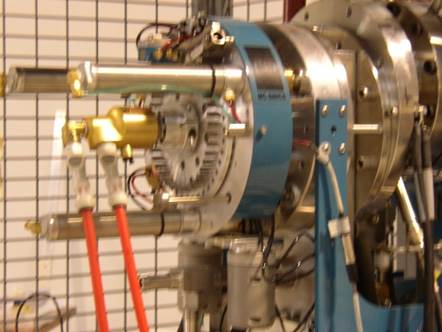
The cesium sputter ion source is a 40-sample MCSNICS normally biased at -43 kV.Typical output from a φ=1 mm sample pressed in Al cathodes for 12C- ions is 30 mA at 6 kV probe voltage and a total injection energy of 67 kV.
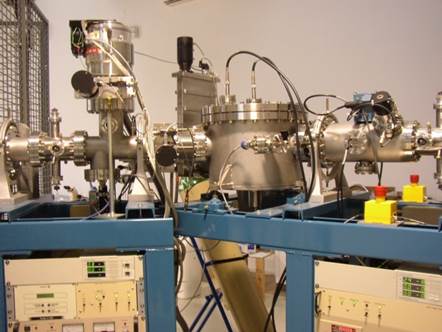
A spherical electrostatic analyzer (r = 30 cm, plates gap = 5 cm) cuts the sputter energy tail of the beam, with a bending angle of ± 45°. The ESA can be rotated in view of the installation of a second ion source
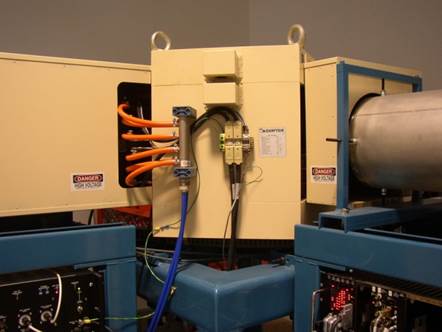
The 90° double focusing L.E. magnet (r = .457 m, gap = 38 mm, ME/Z2 = 15) allows high resolution mass analysis for all stable isotopes in the periodic table. The insulated stainless steel chamber can be biased up to -15 kV for beam sequencing.
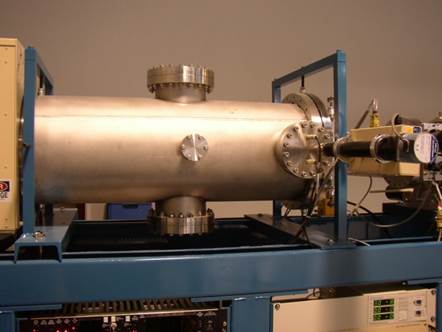
Typical injection times for 14C AMS are 350 ms for mass 12, 850 ms for m=13, and 100 ms for m=14.12C and 13C currents in the LE side Faraday cup are integrated for .1 ms and 8 ms, respectively.
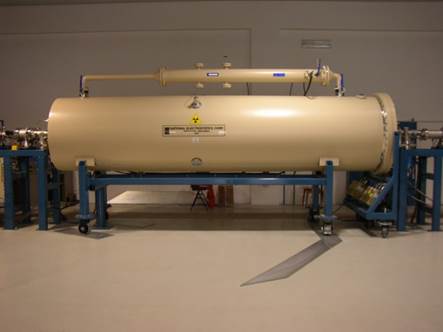
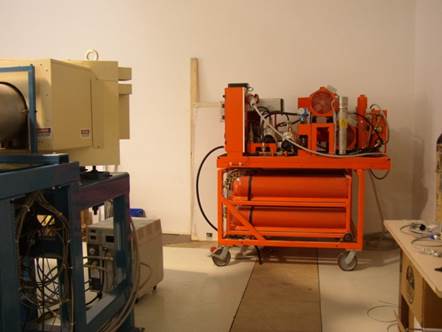
The NEC 9SDH-2 Pelletron accelerator is housed in a lead-shielded steel tank filled with SF6 at ~85 psig. Two Pelletron chains are used in the charging system; about 100 mA are delivered to the terminal for operation at 3 MV. For 14C AMS the accelerator is operated at 2.55 MV; typical ripple, as measured by a capacitive pick off, is .7 kV peak-to-peak. Stabilization is achieved by GVM feedback on the charging system PS; the long term stability, over about 24 hours needed for a batch of 40 samples, is better than 1 kV. In the stripper Ar is recirculated by two turbo-pumps; the working pressure is 10 m. During 6 months of operation no tank opening was needed.
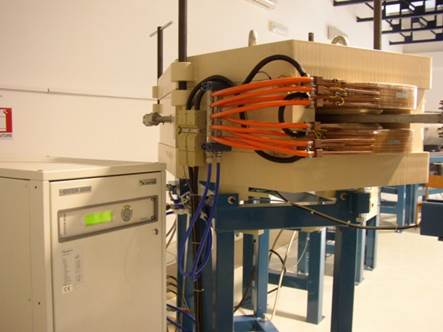 The double focusing 90° HE bending magnet has r=1.27 m, ME/Z2=176 and M/DM = 725, so that, e.g., 236U5+ at 3 MV can be analyzed with a beam spot size of 3.5 mm. For 14C AMS, 12C and 13C charges are measured via two off-set Faraday cups and high-precision current integrators, typically for .25 and 8 ms per cycle. On the average, the precision of 13/12 ratios is ~0.15%, while precision and accuracy of δ13C measurements are ~0.25% and ~0.1%.
The double focusing 90° HE bending magnet has r=1.27 m, ME/Z2=176 and M/DM = 725, so that, e.g., 236U5+ at 3 MV can be analyzed with a beam spot size of 3.5 mm. For 14C AMS, 12C and 13C charges are measured via two off-set Faraday cups and high-precision current integrators, typically for .25 and 8 ms per cycle. On the average, the precision of 13/12 ratios is ~0.15%, while precision and accuracy of δ13C measurements are ~0.25% and ~0.1%.
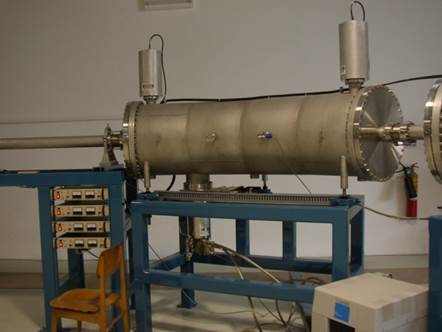
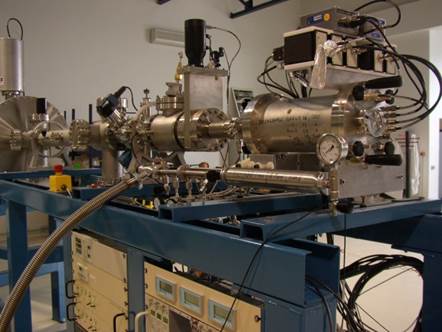
The two 45° electrostatic spherical analyzers (r= 2.54m and gap=3 cm) are operated at ± 40 kV; energy resolution is E/DE = 700. The isotopic contamination is suppressed so that virtually 0 counts are observed out of the 14C ROI.
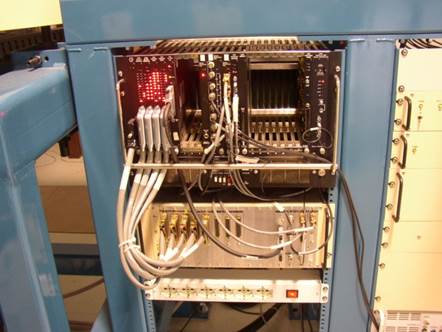
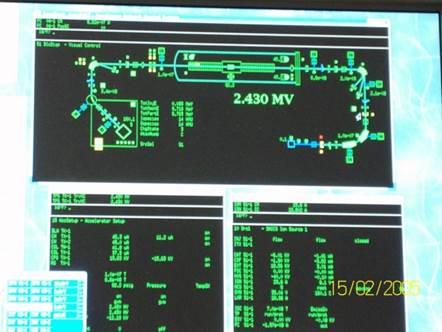
The four-anode ionization chamber, filled with isobutane at p=50 Torr, as well as most of the set up and control of the entire system is handled by the AccelNet computer based system via CAMAC interfaces or Ethernet.








